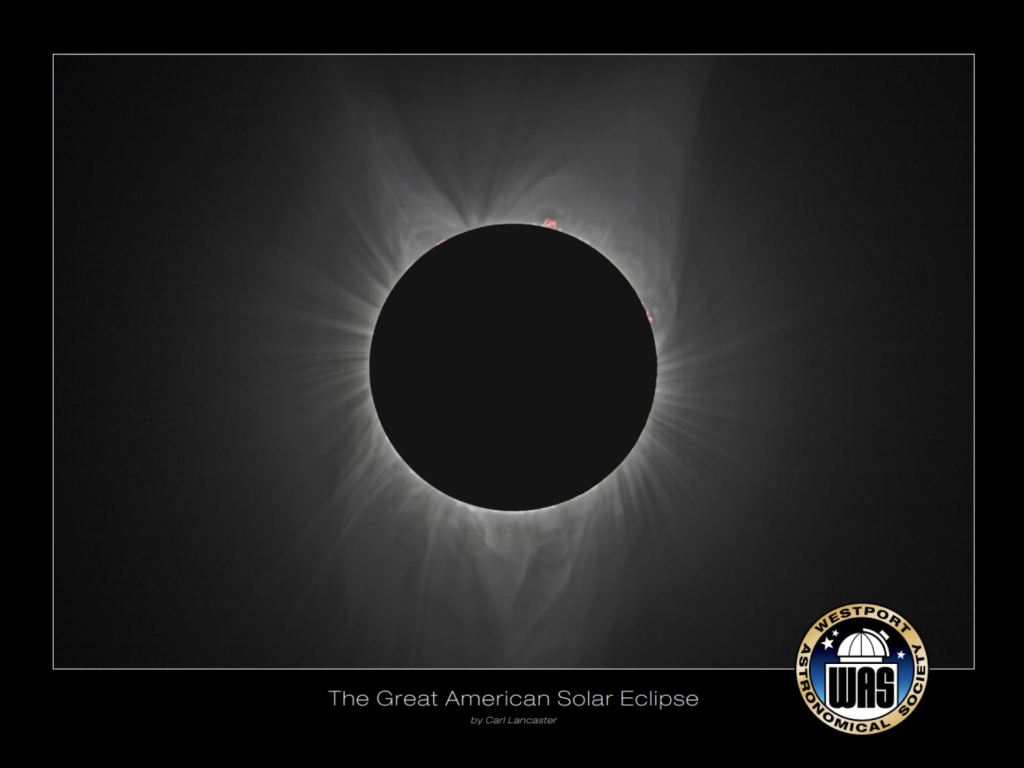 FOR IMMEDIATE RELEASE:
FOR IMMEDIATE RELEASE:
Contact: Dan Wright
k1was@was-ct.org
Phone: (203) 293-8759
Westport, Connecticut – March 13, 2024 – The Westport Astronomical Society (WAS) and its amateur radio station, K1WAS are excited to announce its participation in the observation of the total solar eclipse along the totality line in Texas on April 8, 2024, with a grant from NASA using high-altitude balloons launched by the University of Bridgeport and the University of New Haven.
The K1WAS team will assist the University of Bridgeport, and the University of New Haven with their effort in the Nationwide Eclipse Ballooning Project. The amateur radio club, and many other amateur radio operator members and balloon enthusiasts, will help launch several high-altitude balloons equipped with cameras, sensors, and radio transmitters to capture the eclipse from a unique vantage point high above the Earth’s surface.
“We are thrilled to be able to contribute to the scientific community’s understanding of this celestial event,” said Dan Wright N3DAW, Board Member of the Westport Astronomical Society. “These high altitude balloon missions will offer a perspective of the eclipse that is both breathtaking and informative, helping researchers study the Sun’s corona and the Earth’s atmosphere in new and exciting ways.”
“Since the University of Bridgeport (UB) began its balloon science and payload work in 2013, K1WAS/WAS members have served as mentors and instructors to both myself and dozens of our students,” said Jani Macari Pallis, Ph.D., professor of mechanical engineering, who leads the engineering teams for NASA/Montana State’s Nationwide Eclipse Ballooning Project (NEBP) for the central northeast. “Early on K1WAS/WAS members took the time to instruct in all aspects of high altitude balloon flight: from safe helium usage and transportation, stacking and tying payloads together, creating containers to protect the instruments, communications, launch, tracking and balloon and payload recovery. K1WAS/WAS members have been at each of our launches and served as mentors and team members for UB’s 2017 total solar eclipse team as well as our 2023 annular eclipse team and upcoming 2024 total solar eclipse team. We are particularly indebted to K1WAS/WAS members Larry Reed, AB1JC, Gary Moyher, WE1M, Mike Miciukiewicz, K1MJM, and David Schadlich, KB1LTW.”
The University of New Haven’s Texas team will include ozonesonde payloads during this eclipse to monitor the ozone levels in the atmosphere. Both traditional weather balloons and a newly improved altitude-controlled balloon will be used for this mission. These experiments will provide data analysis, and valuable information to scientists across the planet that will be analyzed after the event.
The launch of the high-altitude balloon will take place from a location near the path of totality in Junction Texas at Texas Tech, where the eclipse will be visible for the longest duration. The balloons will ascend and hover at an altitude of 80,000 feet while gathering data, providing a clear view of the earth as the eclipse’s shadow passes.
Amateur radio operators and astronomy enthusiasts are invited to join the Westport Astronomical Society’s observation efforts by following the balloon’s location which will be captured in real-time using an amateur radio system called APRS (Automatic Packet Reporting System), and participating in related events and discussions. Details on how to access the data and participate in the event will be shared on the Westport Astronomical Society’s website and social media channels.
The total solar eclipse, a rare astronomical event where the moon passes between the Earth and the Sun, will be visible across parts of North America but the sun is only 90% obscured in Westport and much of New England. The Westport Astronomical Society, known for its dedication to promoting astronomy and space exploration, is leveraging its resources and expertise to enhance the viewing experience for enthusiasts and researchers alike. Locally, WAS will have telescopes set up to safely view the partial eclipse with our partner, the Westport Library on April 8th from 2 – 4 PM.
In Connecticut, the next partial solar eclipses aren’t until 2028 and 2029 and will not obscure the sun anywhere near what we’ll see in April. For that, you’ll have to wait until the total solar eclipse on the morning of May 1, 2079.
More on WAS:
WAS opens up the Westport Observatory to the public every clear Wednesday from 8- 10 pm. For more information about the Westport Astronomical Society and its amateur radio station KIWAS, visit www.was-ct.org. Follow the Society on Facebook, Mastodon, LinkedIn, and Instagram for updates on the total solar eclipse observation mission.


